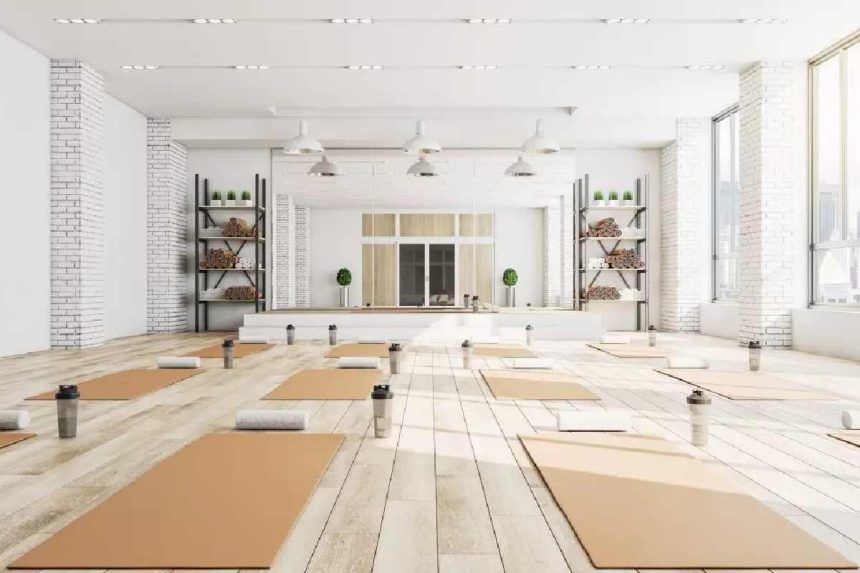Designing Spaces That Promote Wellness and Tranquility
Creating environments that promote wellness and tranquility has become more important than ever. Whether at home or in a workspace, the design of a space can significantly influence mood, productivity, and overall well-being.
A thoughtfully designed space can become a sanctuary that nourishes the mind, body, and spirit, helping individuals recharge and find peace amid life’s chaos.
Here’s how to design spaces that foster wellness and tranquility, using both practical and aesthetic elements.
-
Table of Contents
Embrace Natural Light and Fresh Air
One of the easiest ways to promote wellness in any space is by maximizing natural light and ensuring good airflow. Sunlight not only enhances the aesthetic appeal of a room but also boosts mood and productivity, reducing stress and increasing feelings of happiness. Position your furniture to make the most of windows and natural light sources, and consider using light, airy curtains to allow sunshine to filter through.
In addition to natural light, good airflow is essential for creating a refreshing and tranquil environment. If possible, keep windows open to allow fresh air to circulate, or invest in a high-quality air purifier to maintain clean air inside. Fresh air and natural light create a calming atmosphere, contributing to a sense of well-being.
-
Incorporate Nature with Plants and Natural Materials
Nature has a powerful impact on mental and physical well-being. Bringing the outdoors inside through plants and natural materials is one of the best ways to create a calming and rejuvenating environment. Indoor plants like peace lilies, succulents, or fiddle leaf figs not only purify the air but also add a touch of tranquility to any room.
For a more holistic approach, use natural materials such as wood, stone, bamboo, and cotton in your furniture, flooring, and textiles. These materials evoke a sense of warmth and comfort, helping to create a serene, nature-inspired atmosphere. Whether it’s a reclaimed wood coffee table or a cozy linen throw, these elements ground the space and make it feel more harmonious with nature.
-
Opt for a Calming Color Palette
The colors you choose for your space can have a profound impact on mood and relaxation. Soft, neutral tones such as beiges, whites, light grays, and pale blues are perfect for creating a serene environment. These colors evoke a sense of calm and cleanliness, allowing your mind to relax and unwind.
If you prefer more color, consider integrating soothing tones like sage green, lavender, or muted blues. These colors mimic the natural world and can create a sense of balance and peace. Avoid overly bold or bright colors in spaces meant for relaxation, as they can overstimulate and lead to stress.
-
Create Minimalist and Clutter-Free Spaces
Clutter can significantly increase stress and anxiety, disrupting the sense of tranquility you want in a wellness-focused space. To design a truly calming environment, embrace minimalism by keeping your spaces free of unnecessary items and distractions. Focus on quality over quantity by choosing furniture and décor that serve a purpose and bring you joy.
Incorporate smart storage solutions to keep surfaces clear and clutter out of sight. Opt for sleek, minimalistic furniture that supports functionality while maintaining a clean, open look. By reducing clutter, you create more space for relaxation and mindfulness, allowing your environment to feel expansive and calming. For large furniture pieces or unique items that need to be moved or added to your tranquil space, Shiply furniture shipping services can help simplify the process, ensuring your space is exactly as you envision it.
-
Integrate Soft Lighting for a Relaxing Ambiance
Lighting has a profound effect on mood and energy levels, and soft, warm lighting is ideal for promoting relaxation and tranquility. Instead of relying on harsh overhead lights, opt for lamps, wall sconces, and candles to create a gentle, soothing glow. Use dimmable lights or warm-toned bulbs to give you control over the intensity of the lighting based on your mood or time of day.
For evening relaxation, candles and salt lamps are wonderful additions that promote a calming atmosphere. Candlelight offers a natural, flickering warmth that helps signal to the body that it’s time to wind down. Integrating soft lighting into your design scheme creates a peaceful and inviting environment.
-
Design Mindful Spaces for Reflection and Meditation
Creating designated spaces for mindfulness practices like meditation, yoga, or deep breathing can elevate the overall sense of wellness in your environment. Whether it’s a dedicated room or a cozy corner, make sure these spaces are free of distractions and designed for relaxation. Incorporate soft seating, floor cushions, and calming elements like incense or aromatherapy diffusers to enhance the meditative experience.
You can also use sound as a tool for relaxation. White noise machines, nature sounds, or gentle music can help create an auditory environment that supports tranquility. Having a quiet space where you can reflect, meditate, or practice self-care rituals is essential for maintaining emotional and mental well-being.
Conclusion
Designing spaces that promote wellness and tranquility is about more than just aesthetics—it’s about creating environments that support physical, mental, and emotional well-being. By embracing the above features, you can craft a sanctuary that helps you find peace and balance in your daily life. Through thoughtful design, you can transform your home or workspace into a haven of wellness, allowing you to recharge and thrive in a calm and supportive environment.






